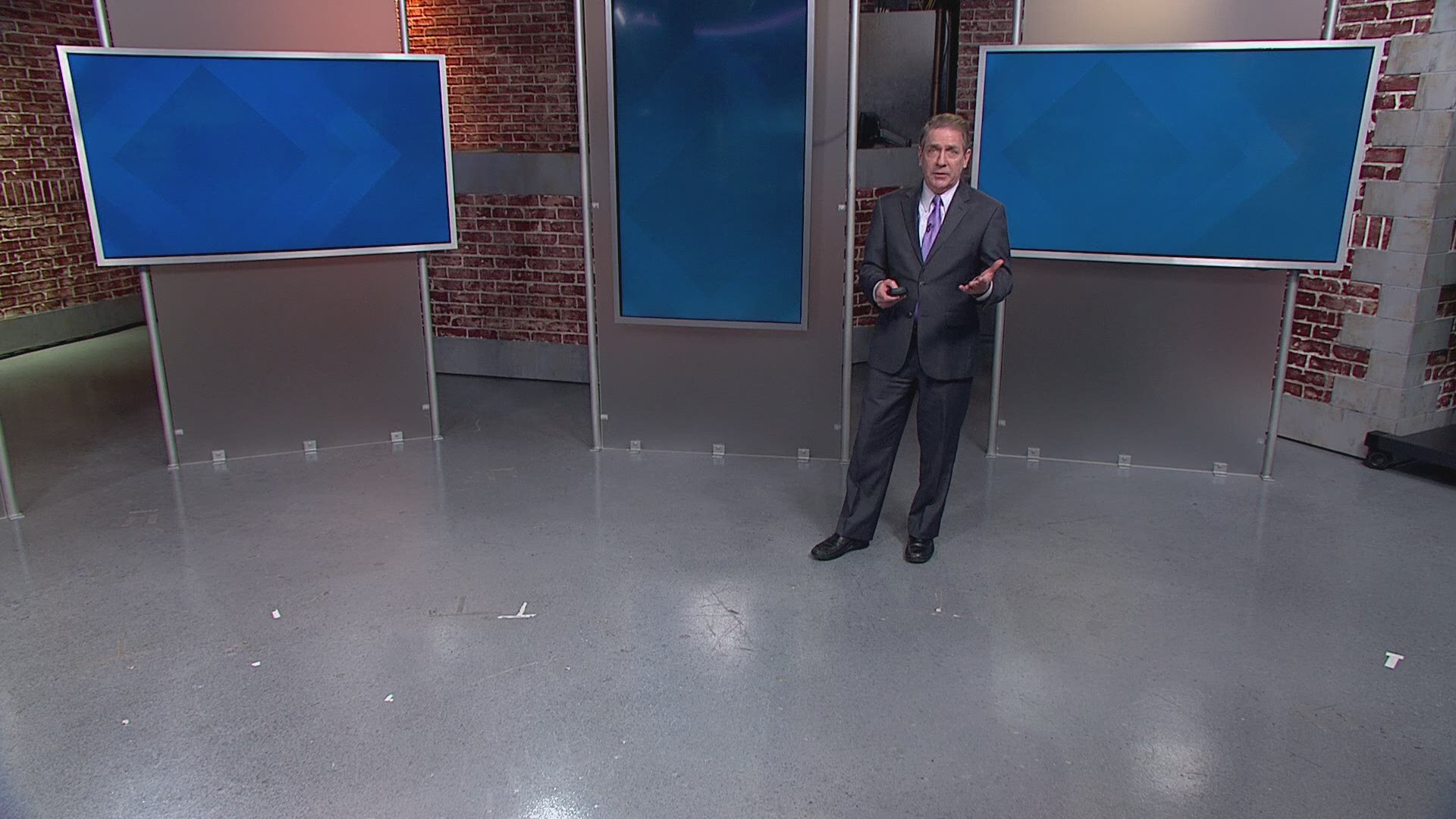WASHINGTON — With the cold weather this week in the DMV, you may have noticed the low pressure light go off in your car.
When it's cold outside, the air is dense and the molecules are more closely packed. This creates lower pressure. So in the winter, you need to make sure you add air in your tires and keep them properly inflated.
What's the result of under-inflated tires? It can have a surprisingly big impact on your chances of hydroplaning during rain.
An under-inflated tire means you have less pressure pushing it down on the road. Therefore, you have less tire-to-road contact than a properly inflated tire. This increases your risk of hydroplaning.
Your car will tell you the proper pressure that the tires should be. But let's break down some numbers on the effect of under-inflated tires on the risk of hydroplaning.
Let's take an example of a car that has tires with a normal pressure of 40 psi. If you're driving at a constant speed on the highway and the roads are wet, here's how the pressure level breaks down in comparison to hydroplaning risk. If your tire pressure is severely under-inflated at only 25 psi, you can hydroplane at just 45 mph. For 30 psi, you hydroplane at a speed of 49 mph. At 35 psi, you'll hydroplane at 53 mph. Then at the ideal 40 psi, it's not until 57 psi that you begin to hydroplane.
Of course, the weight of the car, the tread on the tires, and how the driver drives plays a significant role in your risk of hydroplaning. But having under inflated tires can play a role in your car hydroplaning, which is why you should keep your tires at their recommended pressure level.

